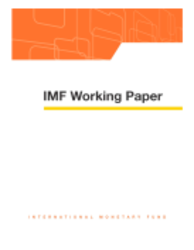
Yugoslav Inflation and Money
Yugoslav inflation unfolded as a classic wage-price-exchange rate spiral through the 1970s and 1980s and exploded into hyperinflation in the last quarter of 1989. This paper examines the process of monetary accommodation of inflation, the behavior of demand for money, and the interaction between the two in Yugoslavia. The asset-liability structure of the Central Bank, together with the policy stance on exchange and interest rates, led to a significant feedback from inflation to money supply. Real money balances are found to have been cointegrated with other economic variables despite their explosive and seasonal nature, and hence in long-run equilibrium relationship as economic theory would suggest.
Publication date: May 1991
ISBN: 9781451971064
$15.00
Add to Cart by clicking price of the language and format you'd like to purchase
Available Languages and Formats
| English |
Prices in red indicate formats that are not yet available but are forthcoming.
Topics covered in this book
This title contains information about the following subjects.
Click on a subject if you would like to see other titles with the same subjects.
Inflation , foreign currency , monetary policy , money supply , Yugoslavia , Federal Republic Of
Summary
Copyright © 2010 - 2025
Powered by:
AIDC



